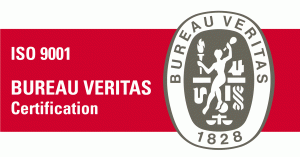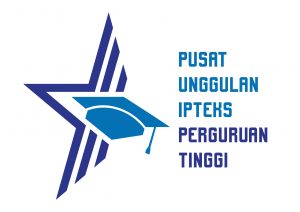
Seminar on Sweeteners
On May 30, 2013, ILSI Southeast Asia Region, together with the ILSI Indonesia Country Committee and Southeast Asian Food and Agricultural Science and Technology (SEAFAST) Center, organized the half-day Seminar on ‘Uses and Safety of Sweeteners’ at the Hotel Borobudur in Jakarta, Indonesia. The meeting was attended by more than 130 local and international participants from both the public and private sectors.
Ms. Pauline Chan, Director of Scientific Programs at ILSI Southeast Asia Region provided the introduction to the seminar. This was followed by welcome remarks from Dra. Engko Sosialine, Director of Production and Distribution of Pharmaceutical Services, who welcomed the participants on behalf of Dra. Maura Linda Sitanggang, Director-General of the Department of Pharmaceutical Services and Medical Devices, Ministry of Health, who was unable to attend. Finally, Dr. Roy Sparringa, Deputy III at the National Agency for Drug and Food Control provided the final welcome address and declared the meeting open.
Session 1: Introduction to Sweeteners and Uses
In his presentation on “Use of Sweeteners in Food and Beverages”, Prof. Dedi Fardiaz from Bogor Agricultural University provided an overview on the science of sweet taste and considerations relating to the use of sweeteners in food and beverage products.
Prof. Fardiaz explained that sweetness of non-sugar sweeteners are generally measured by comparing them to sugar (sucrose), using a standard of a sugar solution of 36 mg/ml. There are many different ways of classifying sweeteners, depending on its source (‘natural’ or ‘artificial’), properties (‘intensive’ or ‘extensive’) or nutritional value (‘nutritive’ or ‘non-nutritive’; ‘noncalorie’, ‘low-calorie’ or ‘reduced-calorie’). When using sweeteners to replace sugar in food and beverages, sweetness alone is not the only consideration, as other factors including body, astringency, bitterness and aftertaste are also important to the overall flavor profile.
Dr. Fiastuti Witjaksono from the University of Indonesia then presented on the “Relevance of Sweeteners to Health and Diet”. Dr. Witjaksono shared that existing dietary guidelines, both at the international and national levels, usually recommend consumers to moderate their consumption of sugar to prevent excessive caloric intake.
For example, the Indonesian General Guides for Balanced Nutrition recommends that not more than 5% of total energy should be derived from sugar. These recommendations are intended to lower the population risk for developing conditions and ailments caused by excessive caloric intake, such as obesity, hypertension and diabetes. In relation to this, non-nutritive sweeteners have the potential to play a supporting role in achieving these desired public health objectives, as they contribute little to no caloric value when used in foods and beverages and may therefore be used to help with managing total calorie intake.
Session 2: Safety and Exposure Assessment of Sweeteners
Dr. Berna Magnuson from the University of Toronto, Canada, thus shared how the safety of sweeteners are established in her presentation on “International Safety Assessment of Sweeteners”. She explained that non-nutritive sweeteners are generally classified as food additives rather than food ingredients.
At the international level, the safety of food additives is assessed by the Joint FAO/WHO Expert Committee on Food Additives (JECFA) and establishes the Acceptable Daily Intake (ADI) for these compounds in food.
The ADI for a sweetener is the amount of it “that can be ingested daily over a lifetime without appreciable health risk”. It is generally applicable for the entire population including sensitive subpopulations (such as pregnant women and children), but not for infants less than 12 weeks old.
The process, methods and considerations for conducting dietary exposure assessments for sweeteners were elaborated in the presentation on “Estimating Exposure to Sweeteners in the Diet” by Mr. John Howlett, an independent food scientific and regulatory affairs consultant from the United Kingdom.
Mr. Howlett noted that exposure assessment should be conducted within the context of the risk analysis framework, which is described in the Codex Alimentarius document on “Working Principles for Risk Analysis for Food Safety for Application by Governments (CAC/GL 62-2007)”.
Ir. Gasilan from the National Agency for Drug and Food Control (NADFC), Indonesia, shared the Indonesian experience on risk assessment and regulation of sweeteners in his presentation on “Safety Risk Assessment of Food Additives”.
In relation to the approval for use and setting of maximum limits for food additives, authorities in Indonesia take into consideration international risk assessment opinions by JECFA; scientific opinions from other scientific institutions including universities; Codex Alimentarius standards; as well as food additive regulations of other countries.
In addition, exposure assessment is also conducted during the pre-market approval process for food additives, with the maximum levels set so that exposure to a particular additive in food and beverage products will not exceed 50% of its ADI. Additional data for exposure assessments are also obtained from existing monitoring and surveillance data collected by the NADFC.
The final presentation of the seminar was provided again by Dr. Berna Manguson, who spoke on the topic of “Approaches to Evaluating Safety of ‘Natural’ versus ‘Artificial’ Sweeteners – Is There A Difference?” Dr. Magnuson explained that there are in principle no differences in the evaluation process for ‘artificial’ versus ‘natural’ sweeteners, as food safety authorities generally require food additives to meet the same standards of safety regardless of their source or origin. This is because both natural and artificial compounds have the same potential for toxicity, with many compounds found in nature actually known to be toxic as well.



